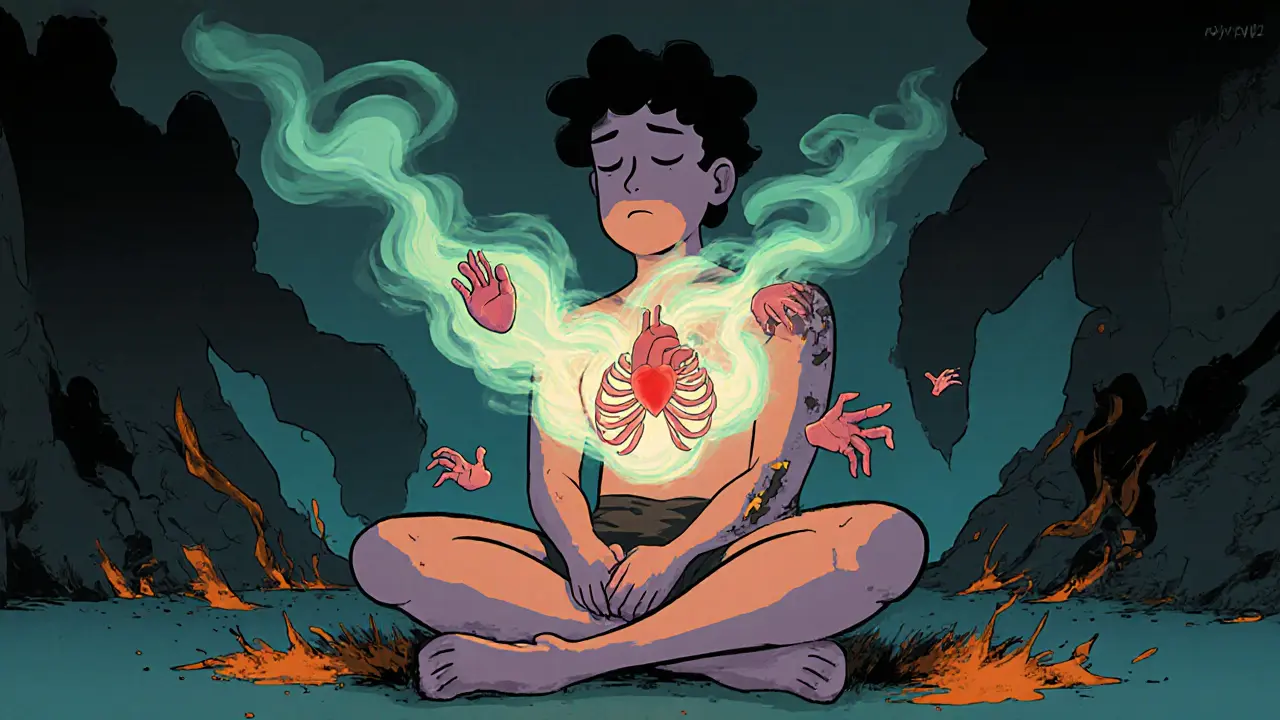Dýchání v terapii: Jak pomáhá uklidnit mysl a zvládat úzkost
When you're overwhelmed, your breath becomes shallow — fast, tight, and disconnected from your body. dýchání v terapii, praktický nástroj v psychoterapii, který využívá přirozenou souvislost mezi dechem a nervovým systémem. Also known as dýchací cvičení, it isn't magic — it's biology. When you slow your breath, your vagus nerve signals your body to switch from fight-or-flight to rest-and-digest. This isn't just a feel-good tip; it's a reset button for your nervous system. Many people come to therapy feeling like their mind is racing, their chest is tight, or they can't calm down no matter how hard they try. Dýchání v terapii gives them something real to hold onto — something they can do right then, right there, without any tools or training.
Therapists don't just tell you to "take a deep breath." They teach you how to breathe in a way that actually changes your physiology. Techniques like diaphragmatic breathing, box breathing, or 4-7-8 breathing aren't random — they're chosen based on what works for anxiety, trauma, or panic. For example, a client with panic attacks learns to extend the exhale, which directly lowers heart rate and blood pressure. Someone with chronic stress might practice rhythmic breathing to interrupt the cycle of hypervigilance. These aren't just relaxation tricks — they're rewiring tools. And they work fast. Studies show that just five minutes of controlled breathing can reduce cortisol levels and activate the parasympathetic nervous system. That’s why therapists use it alongside CBT, trauma work, or even talk therapy — it creates the calm space needed for deeper change.
What makes dýchání v terapii so powerful is that it’s always available. You don’t need a journal, an app, or a quiet room. You just need your body. And because it’s physical, it bypasses the overthinking mind. When words fail — when you can’t explain your feelings or your thoughts are too loud — breathing gives you a direct line to your nervous system. It’s especially useful for people who struggle with emotional regulation, trauma responses, or ADHD-related overwhelm. It’s not a cure, but it’s a foundation. Once you learn to regulate your breath, you start noticing other signals in your body. You begin to recognize the early signs of anxiety before they spiral. You regain a sense of control you didn’t know you’d lost.
You’ll find real examples of this in the posts below — from how breathing supports therapy for PTSD, to how it’s woven into daily stress management, and even how therapists use it to help couples reconnect during conflict. These aren’t abstract ideas. They’re tools people use every day to feel less trapped in their own minds. Whether you’re just starting therapy or have been in it for years, learning to breathe differently might be the simplest, most effective step you can take toward real change.
Role těla v terapii traumatu: Dýchání, pohyb a somatické intervence
Tělo si pamatuje trauma víc než mysl. Dýchání, pohyb a somatické intervence pomáhají uvolnit zadrženou energii a obnovit pocit bezpečí. Zjistěte, jak fungují metody jako Somatic Experiencing®, TRE a kraniosakrální terapie.




